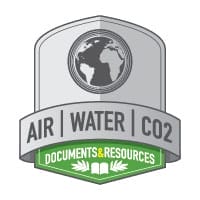CATION EXCHANGE CAPACITY!
In this video, Doc explains the importance of proper plant nutrition. Doc covers what Cations (Cat-eye-ons) – a positively charged molecule – are commonly present in plants: Ca++ (Calcium), Mg++ (Magnesium), K+ (Potassium), and NH4+ (Nitrogen / Ammonia). These are the most important Cations for plant growth as nutrients. This video will explain how to make these nutrients available in your plants. Good Growing!
Transcription:
The topic of this video is the cation exchange capacity and we’ll learn a little bit about how it affects nutrient uptake and plant growth. The cation exchange capacity is associated with soil fertility and will help determine which nutrients are available to your plant. So what is a cation? Simply put it’s a positively charged molecule. Some important nutrients that are available to your plant as cations are calcium, magnesium, potassium, and nitrogen in the form of ammonia. Most growers know that the cations I just listed are important to plant growth as nutrients but how does the cation exchange capacity relate to soil fertility and determine which nutrients are available to plants and which ones aren’t? First we need to talk about perhaps a new word that’s adsorb a DSO RB ads or beans to stick to or gather on the surface and this is important because cations are going to absorb to the negatively charged molecules that are found in the soil molecules like clay or organic matter or if you’re growing indoors vermiculite or quar have a negative charge and they will absorb or have these cations stick to them holding them in place by adding vermiculite or choir to your indoor potting mixture you will be increasing the cation exchange capacity which means these substances will absorb various nutrients that you add and hold on to them so they’re available for the plants to use later.Many of the nutrients that you give your plants in the form of fertilizers dissolve in water. A soils cation exchange capacity will allow these nutrients to be held in the soil until the plants are ready to use them instead of the nutrients being washed out of the plants or away from the roots. In order to make these nutrients available plants will secrete hydrogen ions these positively charged ions will then knock the nutrients that are being held in the soil off of the particles and they will be available to plants to you if you’re using a new soil that you bought from HTG supply you don’t really need to worry about the cation exchange capacity or the soils pH but for hydroponics growers or people that are reusing their soil understanding the cation exchange capacity allows you to understand how certain nutrient deficiencies can develop. For example the very low cation exchange capacity your plants will very readily show a magnesium or a potassium deficiency no matter what fertilizer you use, if you do not understand the pH in the cation exchange capacity in a hydroponic system your plants could still be running on empty. Understanding the cation exchange capacity allows growers to know that high calcium will limit the amount of potassium available to plants and high potassium in the soil will limit the amount of magnesium that’s available to the plants. You may notice some nutrients like nitrous oxide and potassium oxide have a negative charge and therefore they will not be affected by the cation exchange capacity they’re readily available to plants and they’re great but they’re quickly leached from the soil if they’re not used by the plants especially if you over water as always. If you have any questions or comments please feel free to email me at [email protected]. Good Growing.



